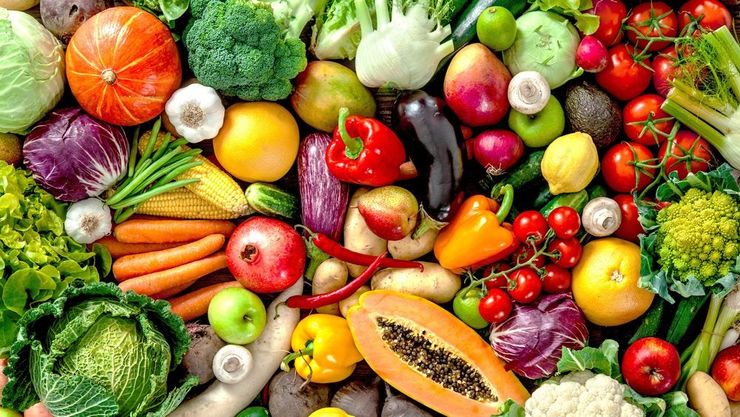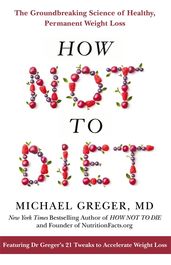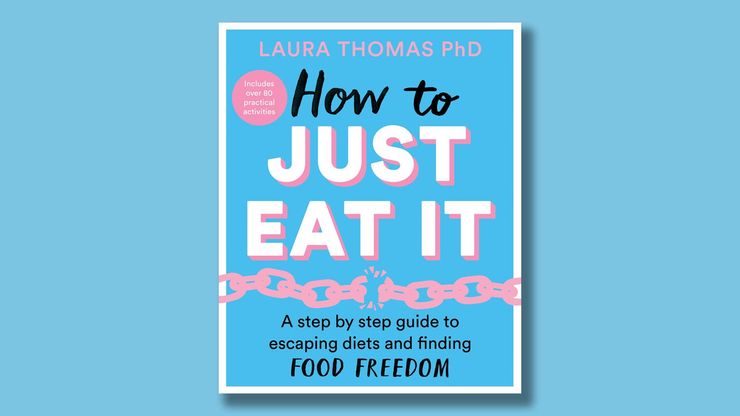8 of the biggest diet myths busted by Dr Michael Greger
Fed up of starting the year with the latest unsuccessful diet fad? Here we share the scientific evidence from Dr Michael Greger’s new book to debunk the diet myths and help us put an end to yo-yo dieting for good.

For many of us, January is a time when our thoughts turn to making healthier choices, and perhaps shifting a few pounds. But with all the conflicting messages out there, it can be hard to know where to start. Does intermittent fasting work? Is gluten really bad for you? And is a calorie really just a calorie?
That’s where Michael Greger MD comes in. Dr Greger hates diet books. More than that, he hates “diet books that purport to hate diet books yet relish in all the same absurdities.” Which is why the latest book from the physician, nutrition expert and bestselling author of How Not to Die is designed for those who want “facts, not filler, fantasy, or fluff”.
Over the course of the book, backed up by over 5,000 academic citations, Dr Greger cuts through the diet industry’s dogma and presents the scientific evidence behind long-term weight loss, busting plenty of commonly held beliefs about diet and nutrition along the way – and hopefully ensuring that we can avoid the annual dieting cycle. Here are some of the biggest myths . . .
Myth #1: Low-carb diets are the only way to lose weight
Put people on a ketogenic, 800 calorie-a-day, low-carbohydrate diet, says Dr Greger, and they lose ten pounds in ten days, compared to only six pounds lost on the same number of calories of a higher-carb diet. Same calories, yet four more pounds lost. ‘What the bathroom scale isn’t telling you, though, is that those four extra pounds were all water.’ Indeed, he adds: ‘In the first week of a ketogenic diet, most of the weight lost is in water, not fat.’
So why are we still so keto crazy? When the diet fails, he says, the dieters often blame themselves, but the intoxication of the initial rapid weight loss may tempt them back. It’s like getting drunk again after forgetting how terrible the last hangover felt. ‘The diet business thrives off of two things – preposterous promises and repeat customers – and one leads naturally to the other.’
Myth #2: Intermittent fasting should take place in the morning
It might have become a popular diet technique in recent years, but according to Dr Greger’s research, the only kind of intermittent fasting that really seems to work is time-restricted feeding. This means squeezing your daily food intake into a certain time window, between 10am and 6pm, for example. Dr Greger also suggests making it early time-restricted feeding: ‘If anything, skip supper and have breakfast. Unfortunately, people do it the other way around.’
Myth #3: All calories are equal
In a lab, writes Dr Greger, a calorie is a calorie, but in life, far from it. Even if you eat and absorb the same number of calories, a calorie may still not be a calorie. ‘The same number of calories eaten at a different time of the day, in a different meal distribution, or after different amounts of sleep can translate into different amounts of body fat,’ he says. It’s not only what we eat but how and when.
How does that work? Dr Greger uses carrots vs Coke to illustrate the science. ‘While it’s true that in a tightly controlled laboratory setting, 240 calories of carrots – ten carrots – would have the same effect on calorie balance as the 240 calories in a bottle of Coke, this comparison falls on its face out in the real world. You could chug down those liquid calories in less than a minute,’ he argues, ‘but eating 240 calories of carrots could take you more than two and a half hours of constant chewing. Not only would your jaw get sore, but 240 calories of carrots is about five cups – you might not even be able to fit them all in your stomach.’
Myth #4: If everyone exercised, obesity wouldn’t exist
Food and beverage companies have spent years trying to blame obesity on inactivity, a tactic Dr Greger describes as ‘leanwashing.’ Meanwhile, Dr Greger writes, ‘the scientific community has come to a fairly decisive conclusion that the factors governing caloric intake far more powerfully affect overall calorie balance.’
There’s even debate in the scientific literature as to whether changes in physical activity had ‘any role whatsoever’ in the obesity epidemic, he points out. Over time, the increase in caloric intake per person is more than enough to explain the U.S. and global epidemics of obesity over the same period. In fact, if anything, the level of physical activity over the last few decades has gone up slightly in both Europe and North America, rather than declined.
Myth #5: Your genes trump your diet
You might have heard about the ‘fat gene.’ But does this really exist? According to Dr Greger’s research, ‘to date, about one hundred genetic markers have been linked to obesity, but when you put all of them together, they account for less than 3 percent of the difference in body mass index between people.’ The ‘fat gene’ you may have heard about (called FTO, short for ‘FaT mass and Obesity associated’) is the gene most strongly linked to obesity, but it explains less than one percent of the difference between people.
Essentially, when it comes to obesity, ‘the power of your genes is nothing compared to the power of your fork’. Even the small influence the FTO gene does appear to be weaker among those who are physically active, and may be abolished completely in those eating healthier diets. Those eating more healthily appear to be at no greater risk of weight gain, even if they inherited the ‘fat gene’ from both their parents.
Myth #6: You need to cut out gluten to be healthy
Ten years ago, asks Dr Greger, how many people had even heard the word gluten? And now, some surveys suggest as many as 25 percent of the population is trying to avoid it. This has led to an explosion of more than ten thousand products labelled as gluten-free.
‘Ironically, gluten-free products may be less healthy, with more sugar and salt, less fibre, and fewer nutrients, but they’re mostly just different shades of the same processed junk. A gluten-free donut is still a donut. And a nutritional analysis of foods marketed to children found that about 90 percent of products—both gluten-free and not—were classified as ’unhealthy.’’
Myth #7: The amount you eat is all that counts
‘It’s not what you eat but what you absorb,’ argues Dr Greger. So you can lose more weight on a high-fibre diet eating the exact same number of calories, simply because some of those calories get trapped and never make it into your system.
What happens, for example, if you feed people white bread with butter versus whole-wheat bread with butter, along with lots of fruits and vegetables, and measure how much butter comes out the other end? ‘The higher-fibre whole-wheat group poops out more than twice as much fat as the white-bread group, since some of the butter calories get trapped in all that fibre.’
Myth #8: You shouldn’t weigh yourself regularly
The scale is an important feedback tool and studies keep showing that regular and frequent self-weighing is linked with successful weight loss and maintenance, Greger writes in his book. His twice-a-day recommendation – stepping on the scale after waking and before going to bed – is based on one study that found this habit was better than checking it once a day. But doesn’t this risk it becoming an obsession? ‘There’s legitimate concern that it can have negative psychological consequences for people with eating disorders,’ Greger writes.
‘But it turns out that with the exception of normal-weight adolescent women and those with a history of eating disorders, having people weigh themselves every day actually has positive psychological benefits.’
How Not to Diet
by Michael Greger MD
Dr Michael Greger, author of the bestselling How Not to Die, offers an easy approach to a healthy, plant-based lifestyle which will help you put an end to dieting and weight-loss struggles. Dr Greger explores the many causes of obesity, and breaks down a variety of approaches to weight loss using cutting-edge dietary research.



